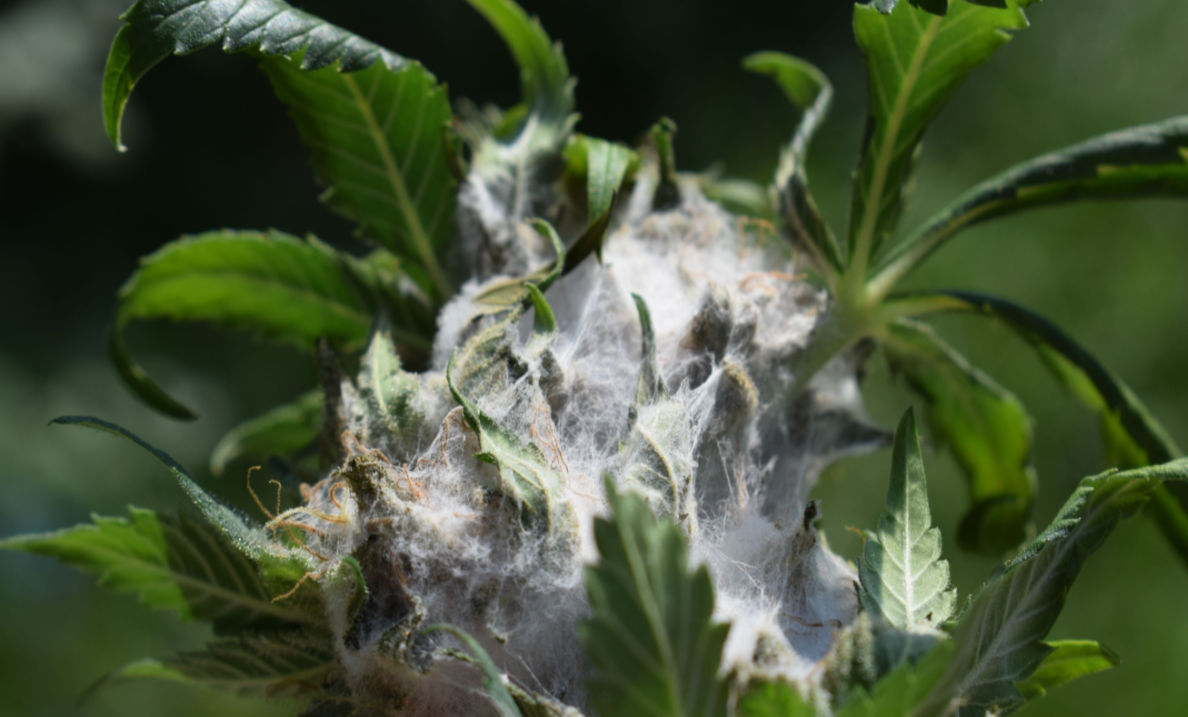The average cannabis consumer probably isn’t too concerned about whether their pot products are moldy or not, but they should be. Ingesting moldy cannabis through smoke or edibles can bring about a number of health risks that could wreak havoc on the lungs. While some folks might not experience any ills after consuming tainted products, others can have mild to severe reactions, causing them to develop coughing and throat irritation. For the most part, these people may never connect the nature of their discomfort to the intake of moldy weed. At least not until the severity of the reaction transforms into a gnarly fungal infection in the throat or the lungs. Although rare, these fungal infections can require medical assistance and, at times, even prove fatal. The good news is mold can be easily detected, but lab testing the cannabis is paramount.
Mold, by definition, is a fungus. It tends to thrive in humid environments that are not adequately ventilated, producing tiny, light, airborne spores that move clandestinely. Quite honestly, most humans breathe in minute mold levels every day just by existing in the world. Fortunately, most of it poses no significant threat to those with a healthy immune system. We’re built to fight it. But it goes without saying that smoking cannabis products tainted with these spores is not exactly conducive to a healthy lifestyle. Mold is relatively resilient and can actually survive the process of combustion. So even after the tainted bud is burned, these toxins live on and can set up shop in the lungs. If a person’s immune system is compromised for some reason – perhaps following chemotherapy for cancer – their health can go south, and fast.
Even when mold is eradicated from the plant, dangerous metabolites called mycotoxins — a known human toxin and carcinogen — can still be left behind. Therefore, anyone who smokes moldy weed or consumes edibles made from a bad batch is at risk of developing health issues. Although no one ever feared moldy marijuana – or even discussed it — when the plant was illegal all across the United States, this contaminant is a lot more prevalent than most consumers could ever imagine.
Several studies published over the years find that moldy cannabis is almost a sure thing if steps are not taken during the grow process to prevent it.
An analysis in the Journal of Allergy and Clinical Immunology finds that 13 out of 14 cannabis samples purchased on the black market contain mold. In 2016, the CDC released a report showing that invasive fungal infections (caused by ingesting mold) were attacking cannabis smokers more than non-users. Of course, the easy fix, or so it would seem, is for the consumer to use only those cannabis products purchased from licensed dispensaries where states require cannabis crops to undergo lab testing. That should keep Americans safe, right? In a perfect world, it should. Only sometimes moldy weed slips by the grower. And not every testing lab is on the up and up or employing qualified safety standards to ensure its removal from the marketplace. Although states require lab testing for contaminants, the lack of standardization in the industry creates a situation where dispensary shelves are sometimes stocked with moldy weed.
This is perhaps why there never seems to be a shortage of cannabis-related recalls. They happen all the time. In fact, if there is a recall on cannabis in your neck of the woods, there’s a pretty good chance that it has something to do with mold. In Michigan, for instance, regulators were forced recently to recall nearly 64,000 pounds of cannabis after state regulators deemed it unsafe from mold contamination. The recall was made after regulators questioned the integrity of the cannabis testing lab charged with testing the crop. A recall of this magnitude can mean millions of dollars in losses, so the growers sued to have their products released even though they didn’t pass standards. Their cries were victorious. A ruling handed down by a Michigan Court of Claims Judge allowed tainted marijuana to be distributed and sold on the legal market. Unfortunately, these types of shenanigans are all too common in the wild west that is legal cannabis.
However, Kaycha Labs is doing its part to ensure lab testing for mold and other contaminants is handled with integrity and truth. All of our procedures and testing methods meet the guidelines and requirements of the U.S. Food and Drug Administration (FDA), the U.S. Department of Agriculture (USDA) Food Safety and Inspection Services, Environmental Protection Agency (EPA), and several other governmental health agencies. We test extensively for mycotoxins, sending only the best products through with our seal of approval. Testing for mold is a critical part of providing the consumer the safety they have come to expect from the products they use. Failing to do so, in our opinion, might ensure sales initially, but it will not contribute to longevity.
That said, mold can also develop on cannabis after being brought home from the dispensary. Mold can form on marijuana products (even vape cartridges) that aren’t appropriately stored or kept for long periods. Therefore, just as crucial as it is for Kaycha Labs to detect mold before cannabis products are distributed for sale, the consumer must also be proactive about cannabis safety at home.
For starters, always keep apprised of any recalls for moldy cannabis products in your state by regularly checking media reports and brand websites. A quick Google search of cannabis recalls in Michigan, for example, will undoubtedly uncover a string of news articles and announcements on the green industry’s fungal indiscretions. Secondly, keep your cannabis stored in a cool, dry environment to prevent mold from developing after purchase. Storing cannabis in airtight glass containers (dark glass preferably) instead of plastic is a pro move for ensuring freshness. The optimal humidity for storage jars should be between 59% and 63%. Disposable humidity packets are a great way of keeping humidity levels in check and cannabis mold-free.
A basic smell test is a good place to start when determining if the old weed found under the couch cushion is fit for consumption. If the cannabis has the aroma of an old musty basement, urine, or body odor, it is probably best to toss it in the trash. But not all mold produces an offensive odor. Getting in touch with your inner science nerd by utilizing a microscope and a black light can also reveal mold spores. Touch is another way to check for freshness. If the bud feels damp when pulling it apart, it’s prime for mold and should be discarded. Still, prevention is always the best policy when it comes to preventing mold from spoiling cannabis and contributing to the deterioration of a person’s health. The cannabis industry must embrace people over profits with respect to testing for mold and push for uniform safety standards that force every cannabis testing lab to adhere to the same set of rules and, above all else, deliver honest results.













